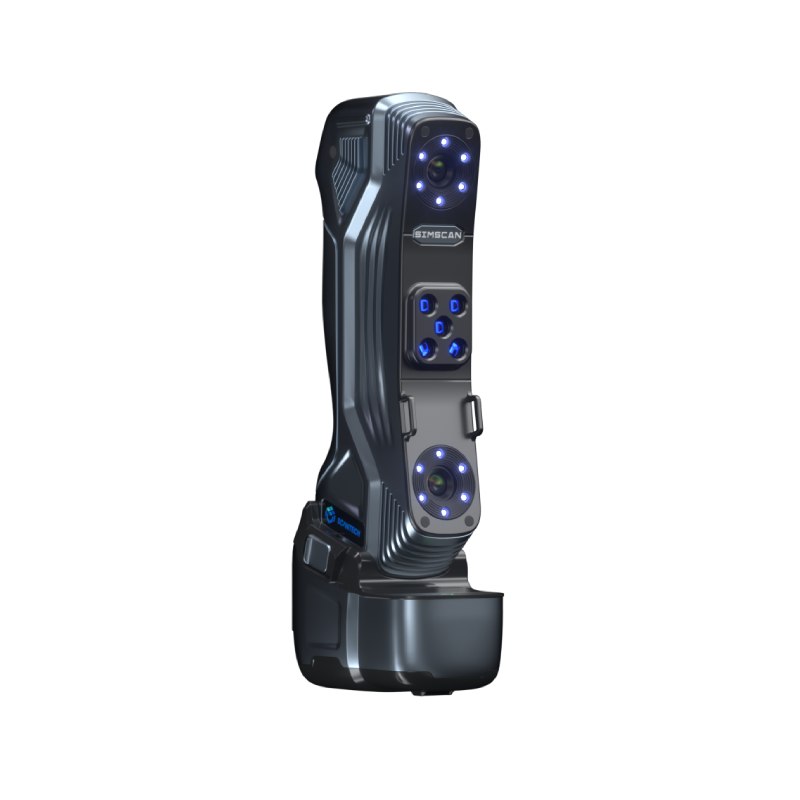Is 3D Laser Scanning Expensive?
3D laser scanning has become a critical tool in industries such as construction and historical preservation. Even though 3D scanners are a must-have in modern engineering and design, they can be pretty pricey.
This is mainly due to the sophisticated technology, high-quality components, and the significant costs associated with research and development (R&D) and manufacturing.
Even though 3D laser scanning can be tricky and involves a lot of factors, the information it gives is super valuable.
It’s great for product development and reverse engineering in industries like automotive, aerospace, and mould making.
It can also save costs by preventing unexpected issues during renovations or major modifications.

Why Is 3D Laser Scanning So Expensive?
Research and Development
The development of 3D laser scanning technology requires significant R&D investment. Manufacturers must research new technologies, prototype, test, and refine extensively to remain competitive and advance technologically.
Developing a new 3D scanner typically spans nine to twelve months, though this timeline can extend for specialized projects.
The process includes multiple stages from concept to market readiness, involving obtaining certifications like CE, FCC, and WEEE, patenting, prototyping, field testing, and final design.
The comprehensive R&D process and associated costs heavily influence the final scanner pricing.
Moreover, software development must run parallel to hardware development to ensure seamless compatibility, particularly challenging for products with novel features, which escalate the complexity and scale of software development.
High-Quality Components
To achieve high precision and reliability, 3D scanners are typically made from high-quality materials and components. These components require stringent manufacturing processes and quality control, further increasing costs.
For instance, high-resolution sensors and camera modules need to be assembled in clean environments to prevent any tiny particles from affecting image quality.
These high-quality components not only enhance the scanner’s performance but also significantly increase its manufacturing costs.

Scanning Algorithms
Processing the raw data collected by 3D scanners relies on complex scanning algorithms. This critical stage determines the 3D scanner’s accuracy and ability to interpret the deformation of laser lines. These algorithms are a vital part of high-end products as they enhance the scanner’s accuracy and detail.
Manufacturing Costs
Due to the relatively small market for 3D scanners, manufacturers cannot amortize costs through mass production. Each scanner needs specialized production and assembly, which makes it more expensive to make.
For instance, the precise assembly process involves rigorous quality testing to make sure everything fits perfectly, which increases both labor and time costs. Plus, since they don’t order parts in huge quantities, the components cost more, adding to the overall expense.

Market Positioning
3D laser scanners primarily target professional and industrial markets, which typically demand high accuracy and performance. To meet these demands, manufacturers have to invest more resources, which drives up the cost of the equipment.
Professional and industrial users need scanners to be precise and stable, even in tough conditions, so manufacturers spend a lot on testing and quality assurance. These extra steps ensure top performance but also make the scanners more expensive.
Service and Support
When you buy a 3D scanner, you usually get technical support, training, and software updates. These extras usually need continuous investment from the manufacturers, which bumps up the overall cost. The support team has to be experts to quickly solve any user problems.
Training helps users get started fast and make the most of the scanner’s features. Software updates keep the scanner competitive and working well with new technology. While these services improve the user experience, they also raise the manufacturer’s costs.

Applications of 3D Laser Scanning
Here are some applications of 3D laser scanning:
★ Reverse engineering
★ Forensics
★ Film and gaming
★ Archaeology
★ Architectural heritage preservation

Frequently Asked Questions:
How much does a 3D scanner cost?
The price of 3D scanners can vary a lot. You can get a consumer-grade scanner for a few hundred dollars, while professional-grade scanners can cost tens of thousands of dollars.
Are there affordable 3D scanners available?
Yes, there are several affordable 3D scanners on the market, but they may have limitations in terms of accuracy and resolution.
What factors affect the cost of a 3D scanner?
The cost of a 3D scanner is influenced by various factors, including the complexity of the device, R&D costs, the need for high-quality scanning, and market demand and competition.
Are there alternatives to 3D scanners?
Although 3D scanners are the best way to create digital models of physical objects, there are more affordable alternatives like photogrammetry and structured light scanning.
Professional-grade 3D scanners are mainly used in industries that need high precision, while consumer-grade scanners are great for less demanding tasks. The different uses and required precision levels influence the price.
How do I determine which 3D scanner is suitable for my needs?
The best way is to think about your budget, what you’ll be using the scanner for, and how accurate and detailed you need the scans to be.
What are the maintenance costs of a 3D scanner?
3D scanners need regular upkeep like calibration, cleaning, and software updates, which can add to your overall operating costs.
What is the learning curve for using a 3D scanner?
Because 3D scanning technology can be complex, beginners might need some time to learn how to use the scanner and the software properly.
Professional training is often required. Scantech provides comprehensive training services to help customers quickly become proficient with our 3D scanners, ensuring they can achieve accurate and efficient results.
What is the lifespan of a 3D scanner?
High-quality 3D scanners typically have a long lifespan, but it depends on the frequency of use and maintenance practices.
How accurate are 3D scanners?
Professional-grade 3D scanners offer very high accuracy, often reaching sub-millimetre levels, suitable for industrial and scientific applications.
How portable are 3D scanners?
There are various sizes and portability options available on the market, from large industrial equipment to handheld portable devices, allowing users to choose the model that best fits their needs.

Conclusion
3D scanners are pricey because of their complexity, R&D costs, the demand for high-quality scanning, and market competition.
However, as 3D scanning becomes more common and technology advances, the cost of 3D scanners is expected to go down over time, making them more accessible to individuals and small businesses.
Scantech offers professional laser scanners that help various industries achieve more efficient and accurate workflows.

























 All Products
All Products 











 en
en 













